Ghost Town: The 2018 Retail-Vacancy Report
For the fourth year in a row, I walked every block in Tribeca, counting storefronts that appear to be available. (The methodology is below.) The number has gone up every year—from 100 in 2015, to 127 in 2016, to 134 in 2017.
This year, there were 151 152. [Update: I forgot the one at 200 Chambers.]
I’m sure someone is already commenting about the “greedy landlords,” even though that’s a simplistic way of looking at the situation. People who have invested in commercial real estate naturally want to make as much as possible from it—and they’re prepared to leave it vacant in the hope that something good comes along. As for the oft-floated notion that there’s some financial benefit or tax incentive from leaving a storefront vacant, a commercial broker who specializes in Tribeca dismissed that out of hand.
These owners undoubtedly see how much property around here in general has risen in value over the past two decades, and how this is among the richest zip codes in the U.S. They see the cars we drive, the clothes we wear. But this is also one of the least dense residential neighborhoods in New York City, with a handful of people often living in huge spaces, when they’re here at all. (A friend dreams of opening an ice cream shop in Tribeca, to which I point out: With so many kids gone for the summer?) Not only is foot traffic unreliable at best, but people just don’t engage with a neighborhood the way they used to. We can tell each other to patronize local shops and restaurants, but no one ever got rich expecting people to do the right thing for someone else.
In short, we have a growing glut of vacant street-level real estate that has been valued based on outdated norms. Even if a serious contraction were to dramatically lower rent, are there enough businesses that could thrive here?
Methodology: As is previous years, the area surveyed is bounded by Canal, Broadway, Murray, and West. I did not include spaces where we know something is coming; buildings under construction that will not be done anytime soon or where the amount of retail is unknown; extended pop-ups and other temporary retail (such as condo sales offices); or anything on Canal, because that’s a different ecosystem from the rest of Tribeca. And the year-over-year numbers aren’t perfect, because I’m not rigorous about making sure that I counted a vague space the way I did before. I’ve organized the photos into quadrants, mostly for my own convenience, so please don’t get hung up on the boundaries.
···················
Northeast Tribeca
Southeast Tribeca
Southwest Tribeca
Northwest Tribeca




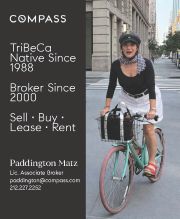


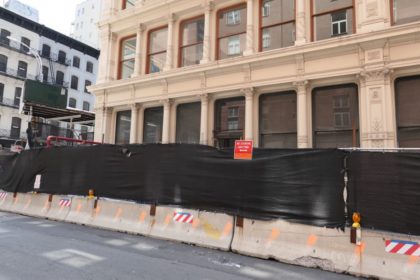
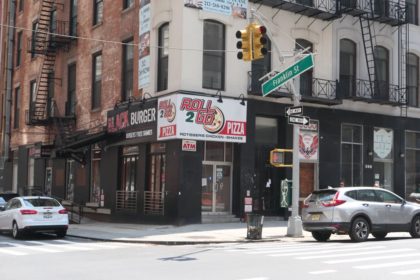
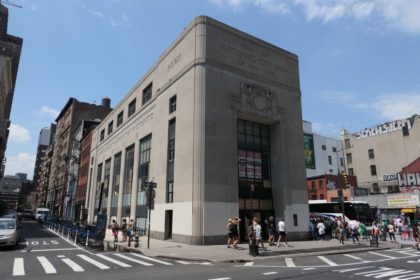
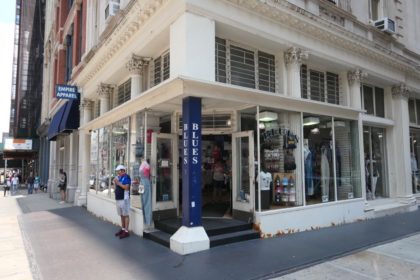
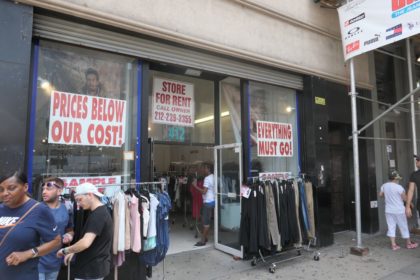
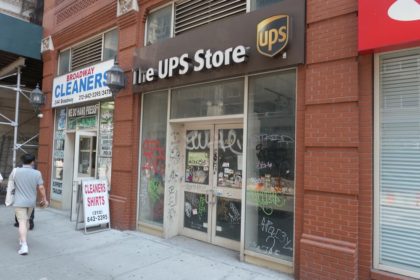
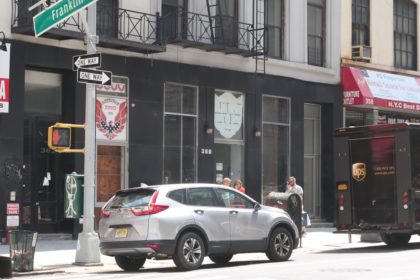
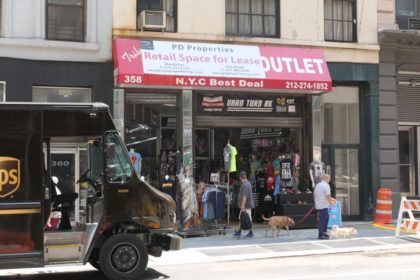
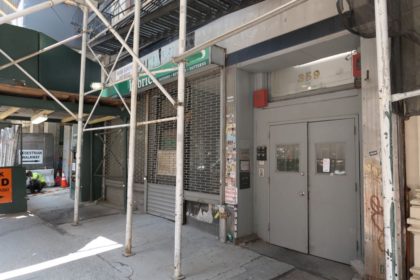
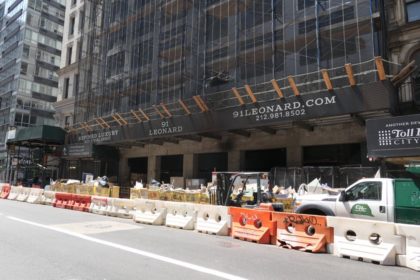
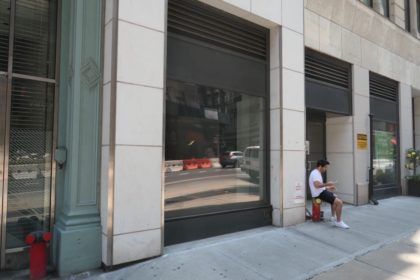
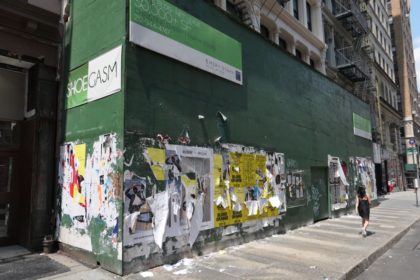
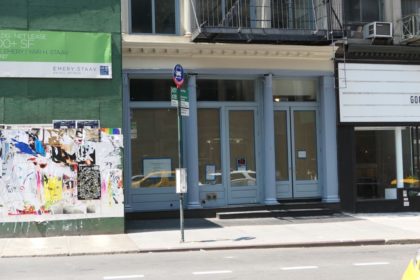
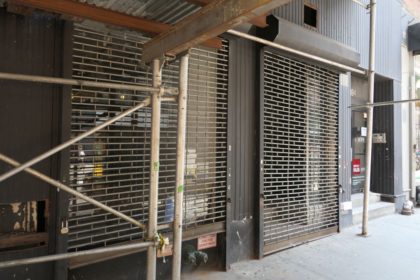
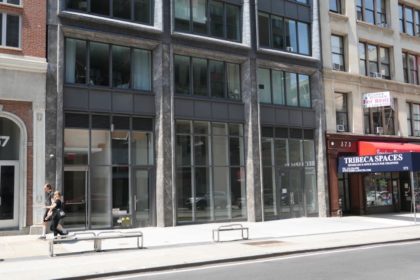
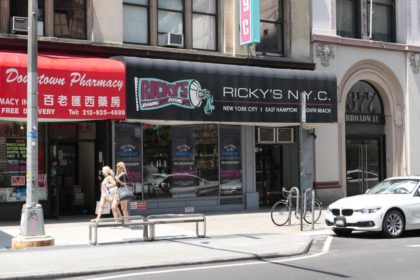
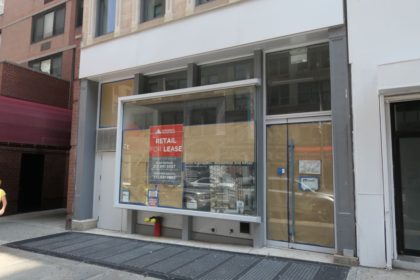
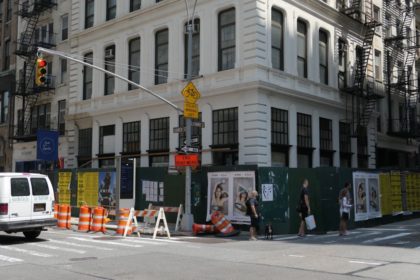
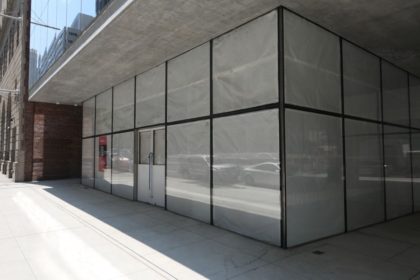
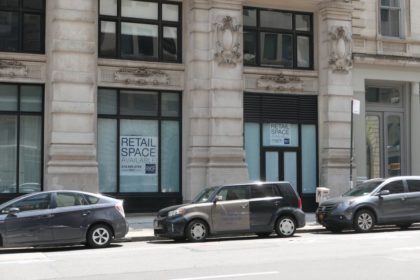
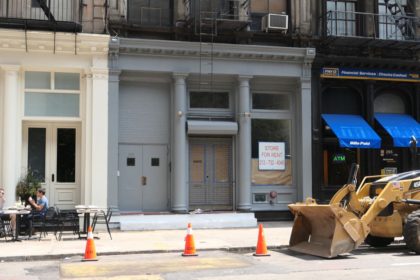
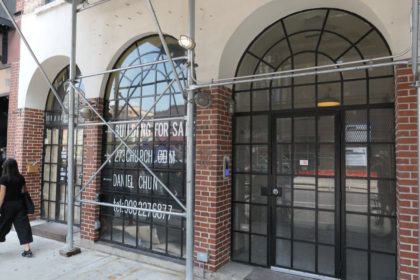
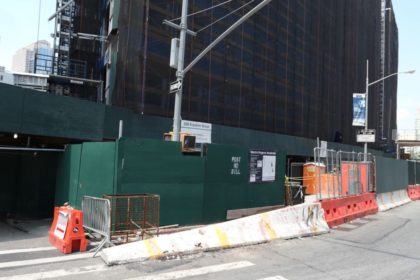
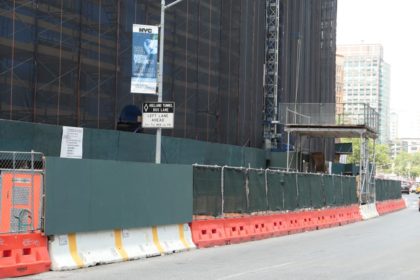
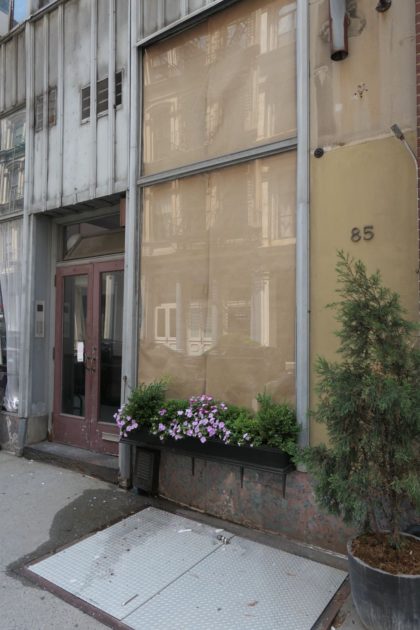
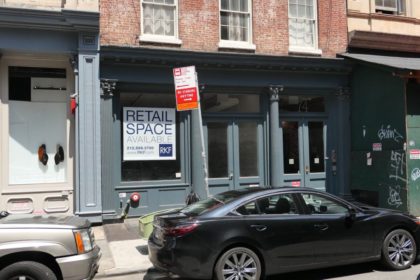
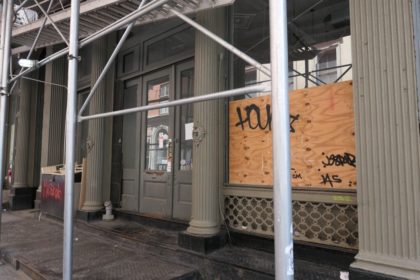
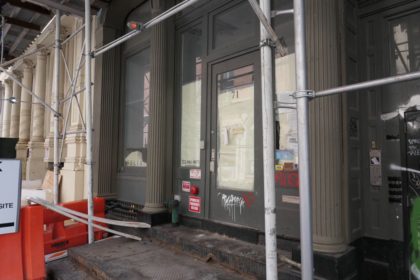
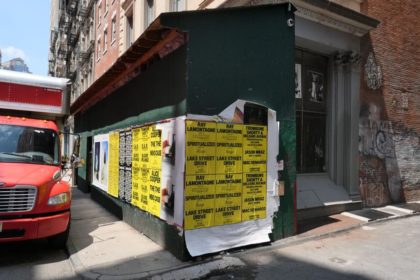
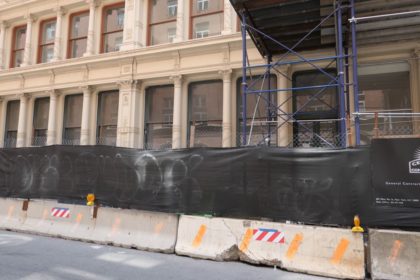
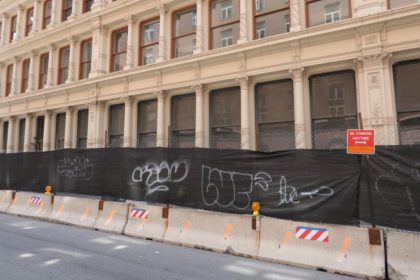
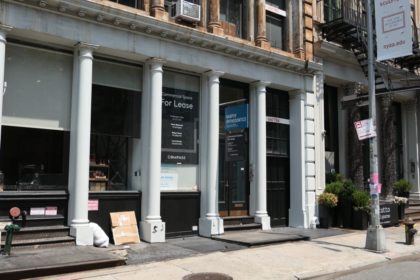
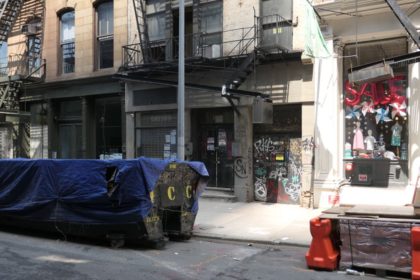
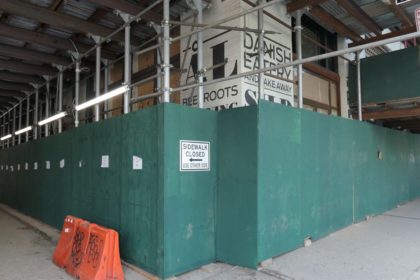
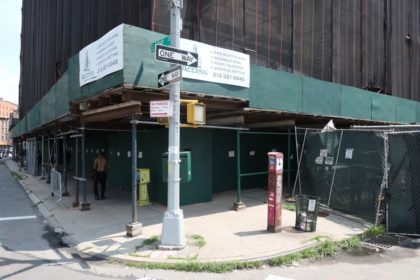
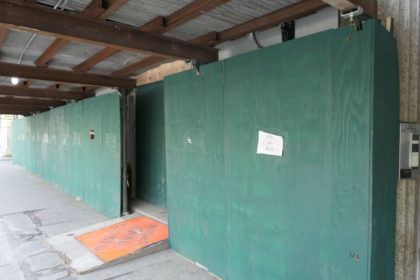
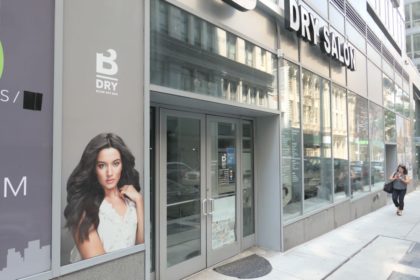
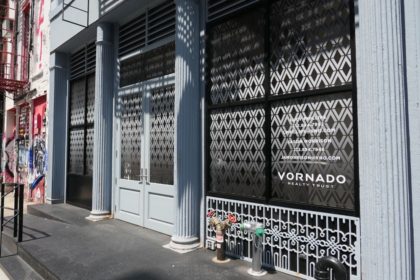
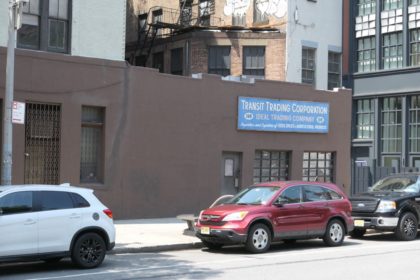
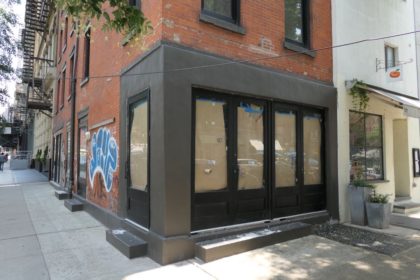
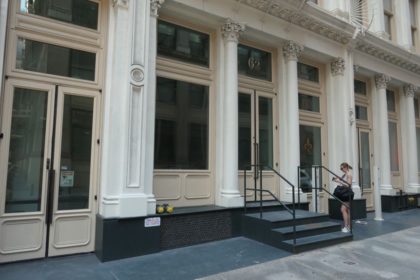
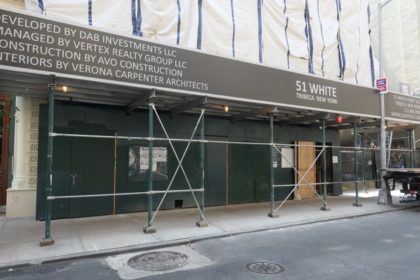
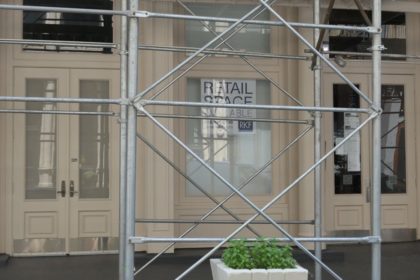
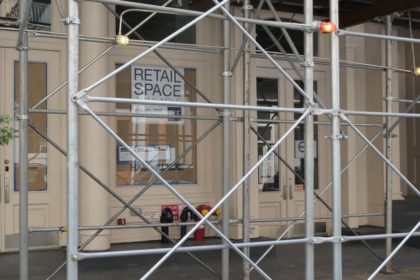
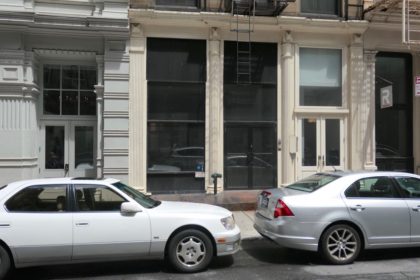
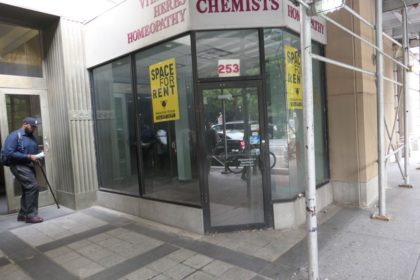
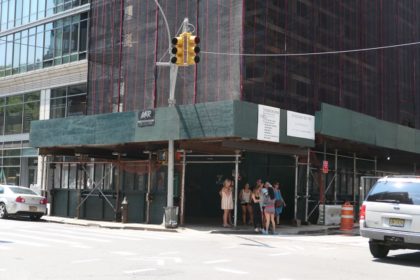
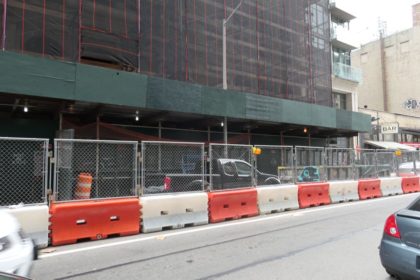
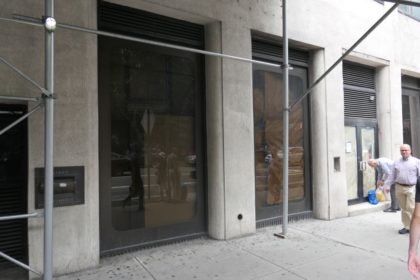
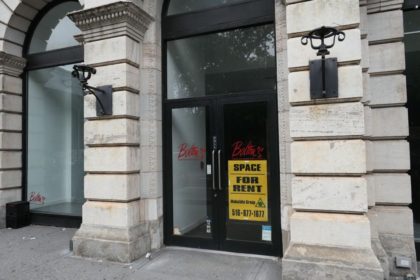
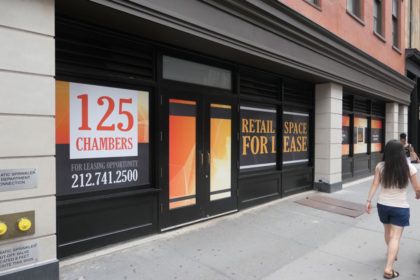
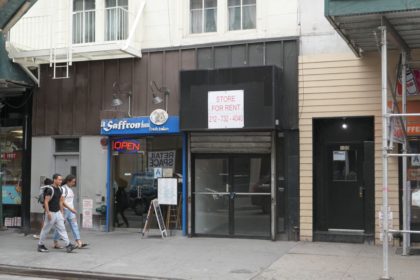
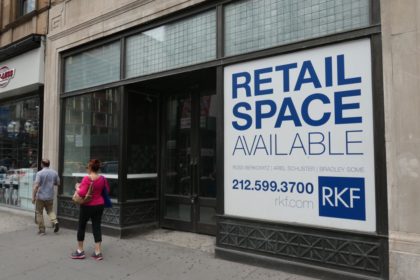
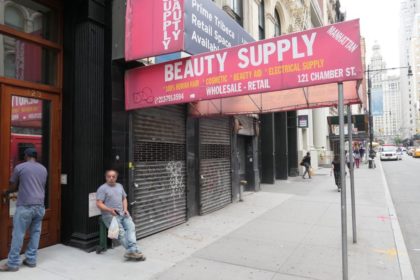
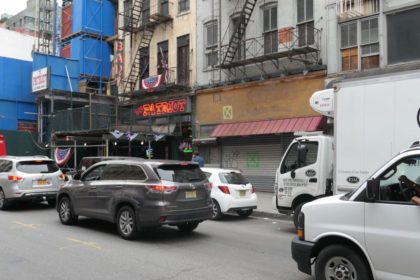
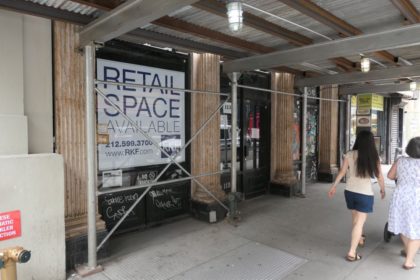
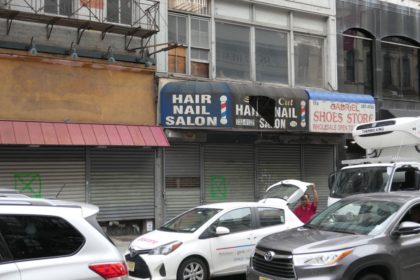
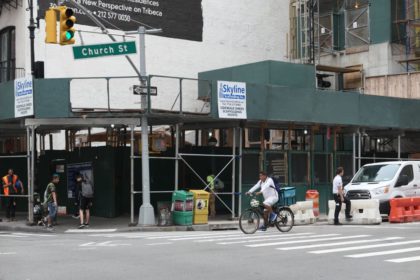
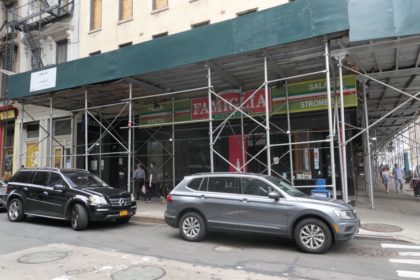
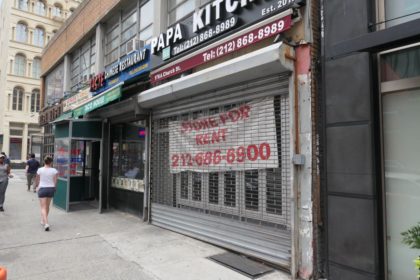
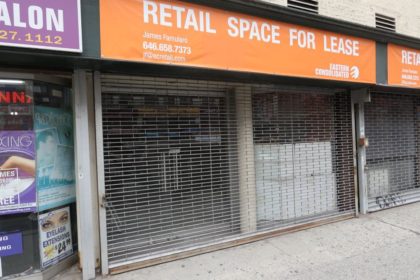
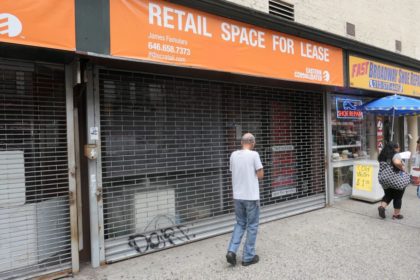
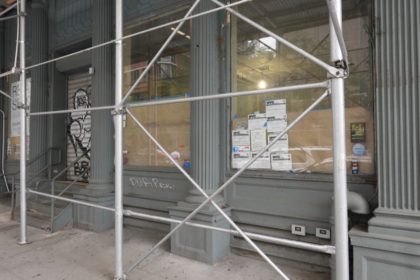
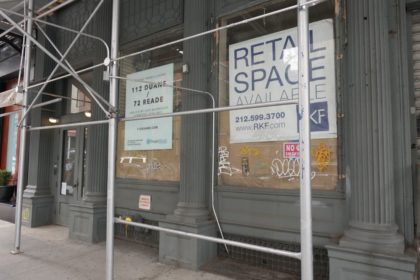
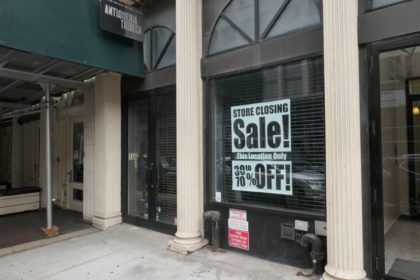
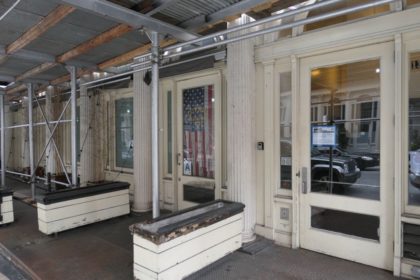
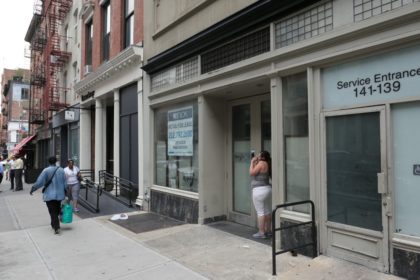
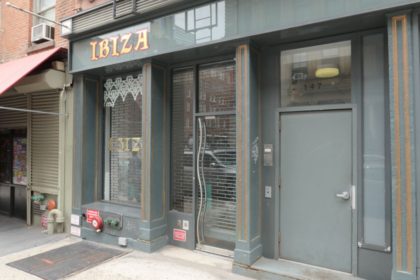
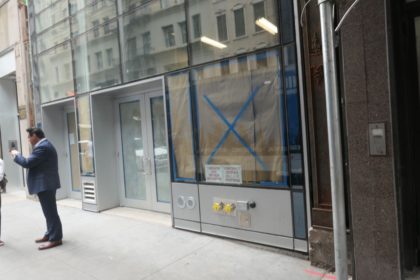
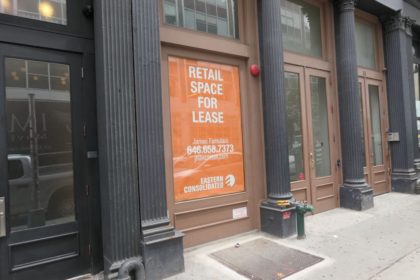
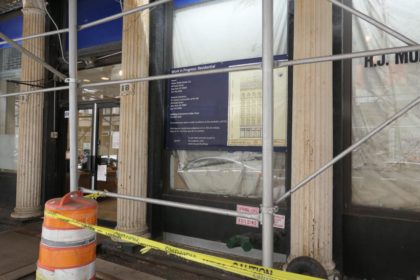
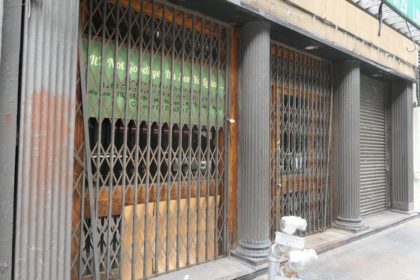
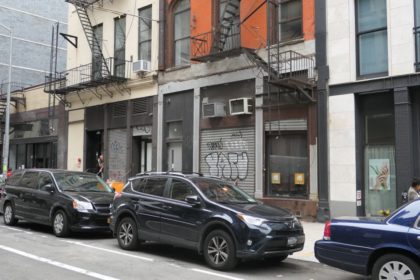
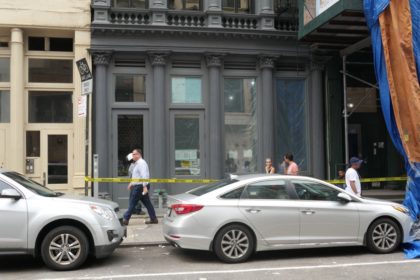
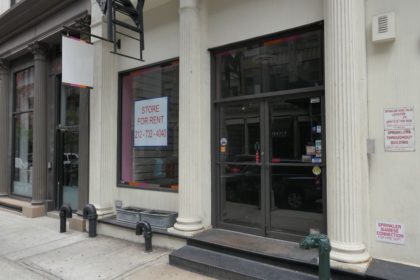
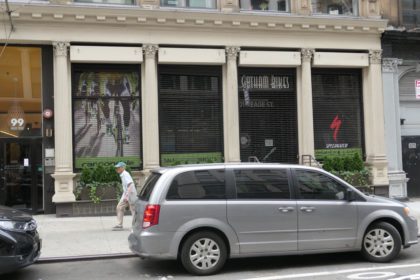
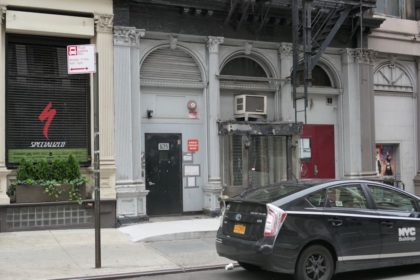
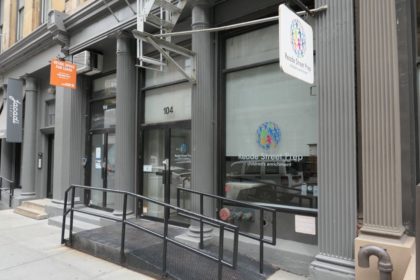
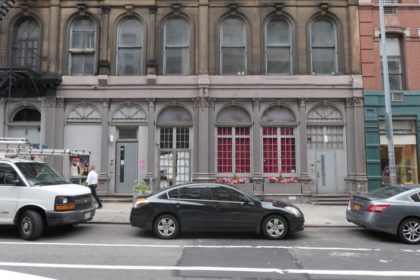
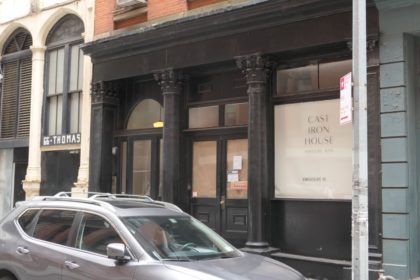
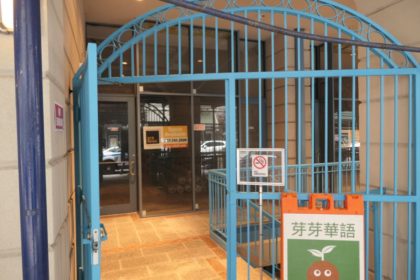
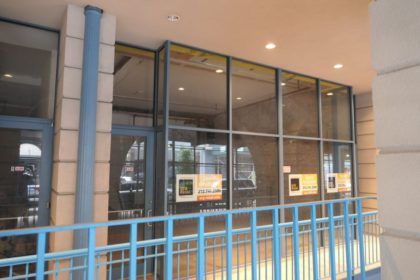
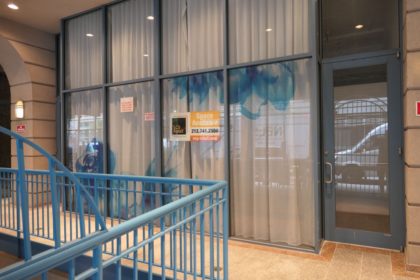
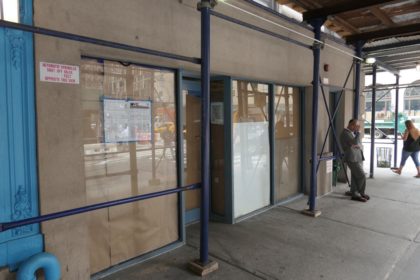
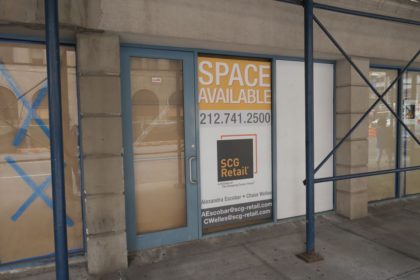
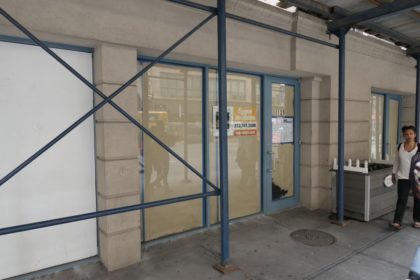
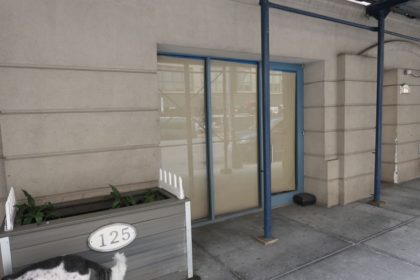
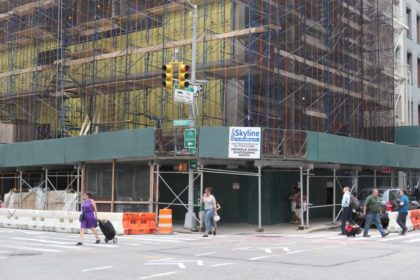
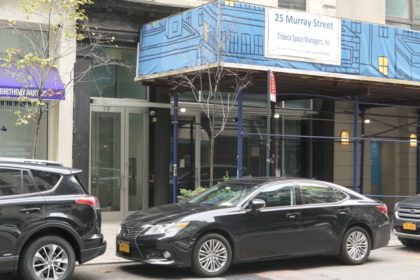
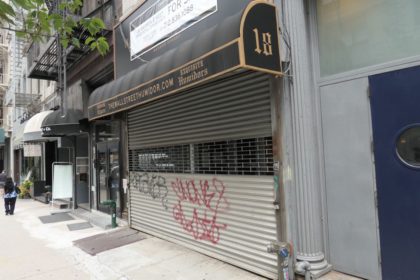
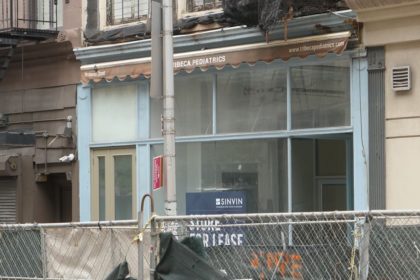
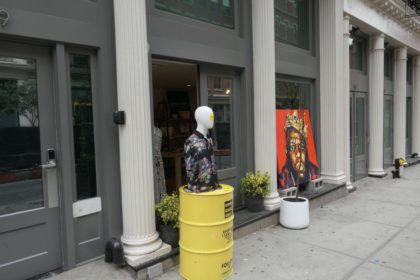
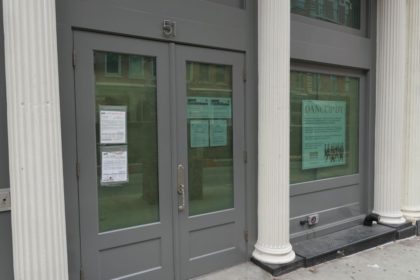
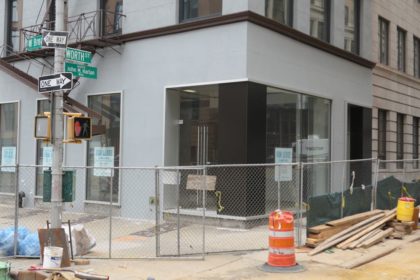
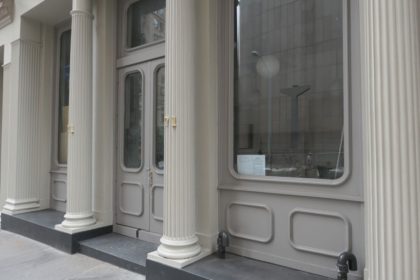
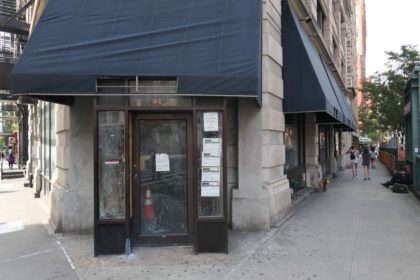

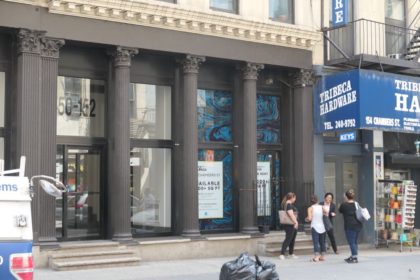
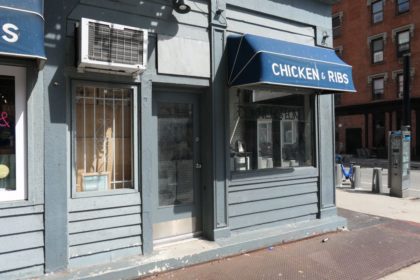
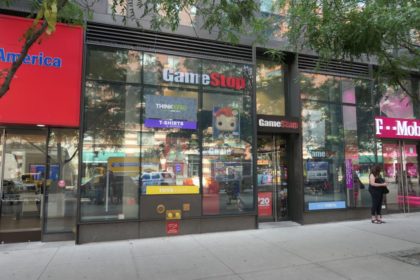
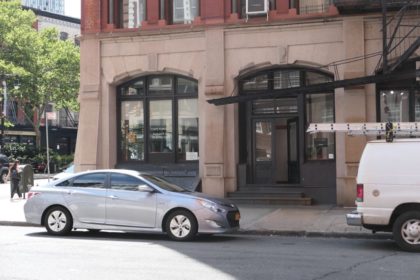
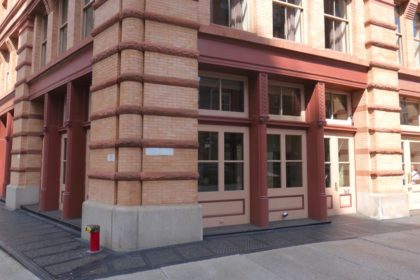
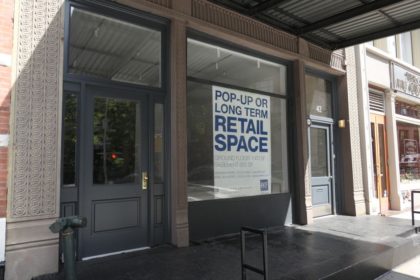
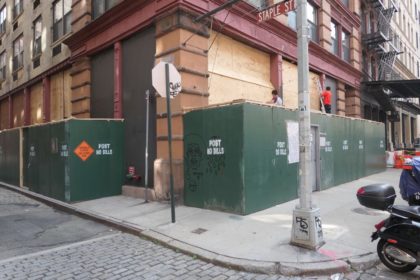
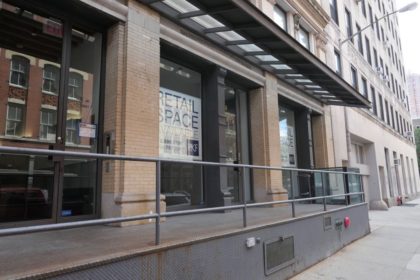
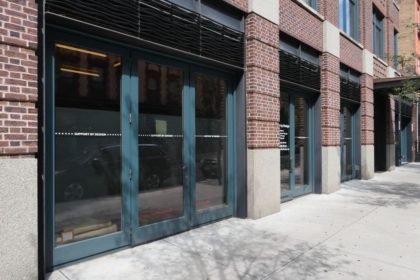
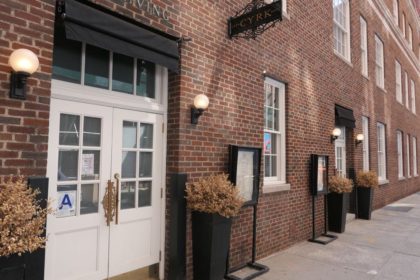
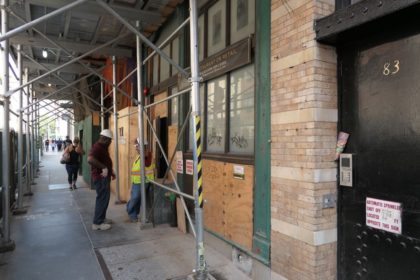
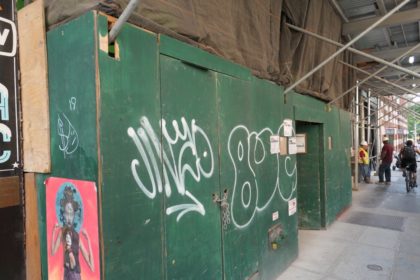
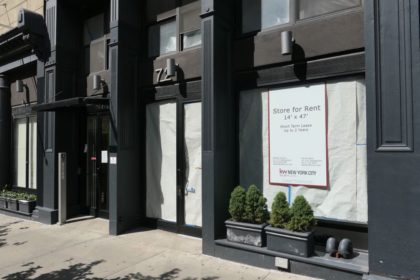
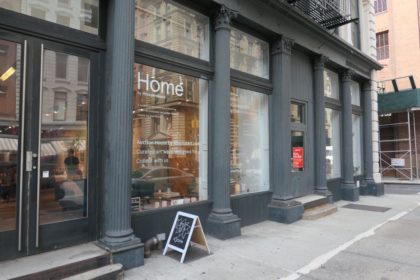
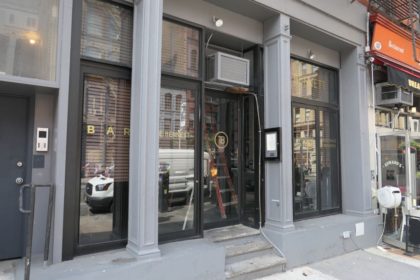
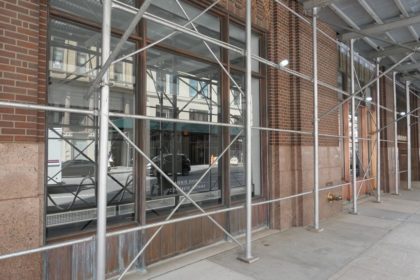
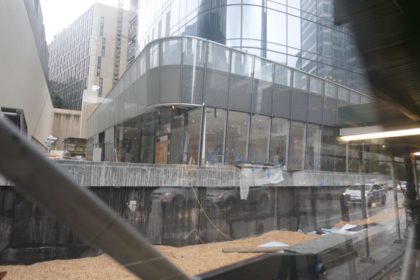
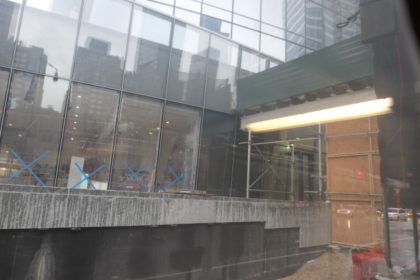
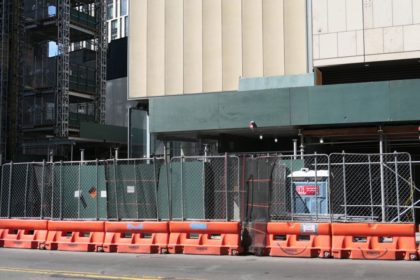
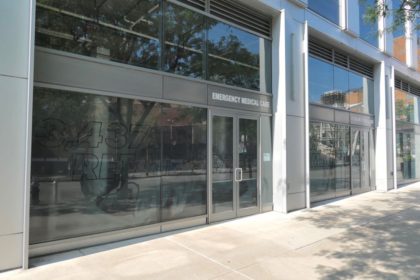
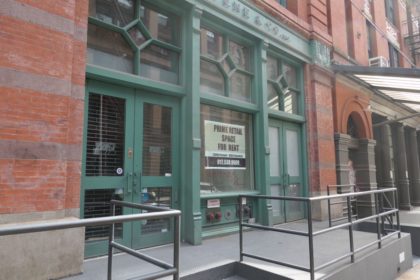
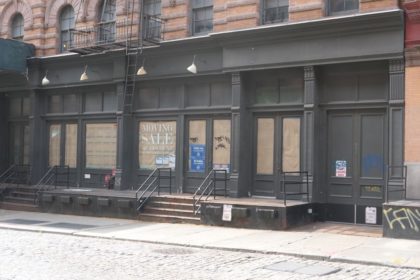
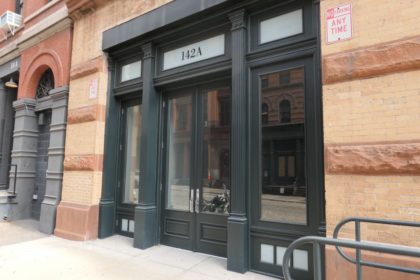
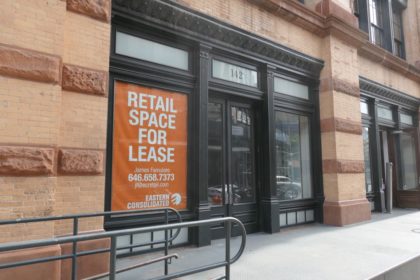
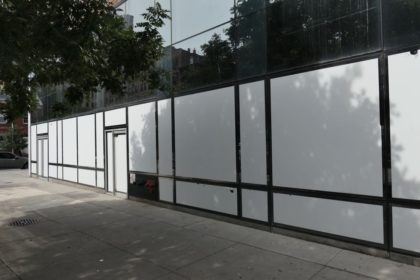
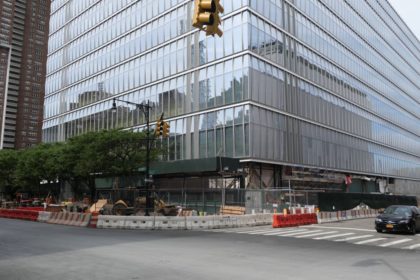
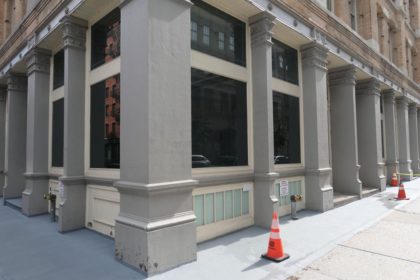
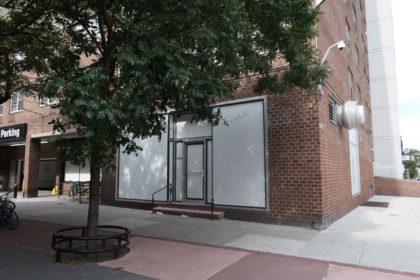
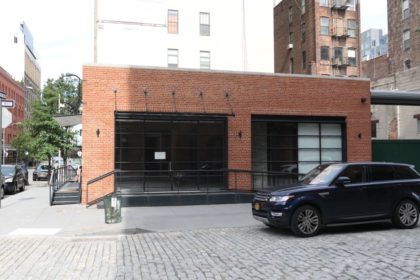
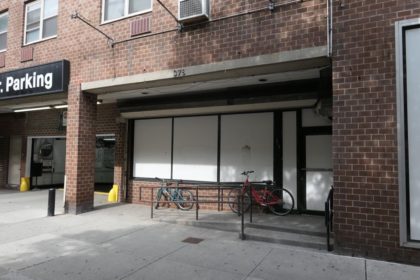
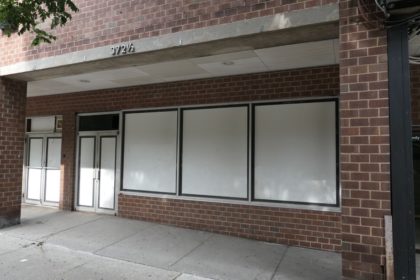
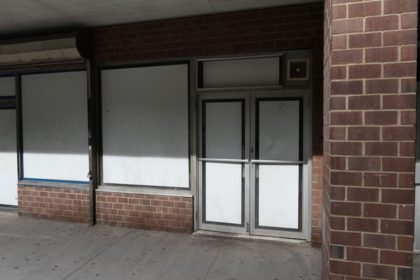
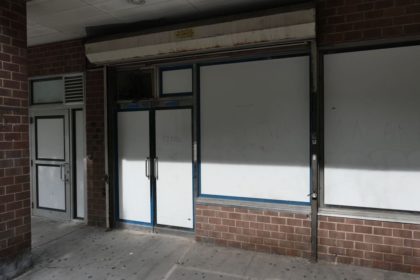
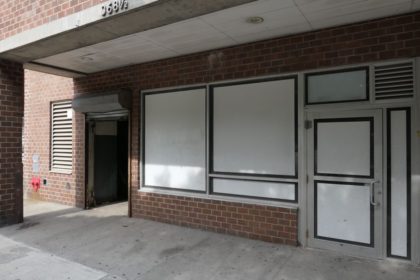
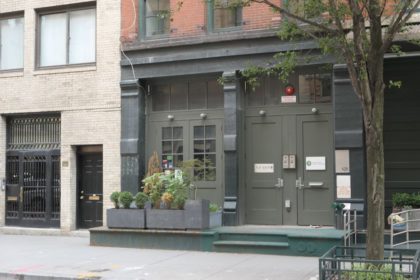
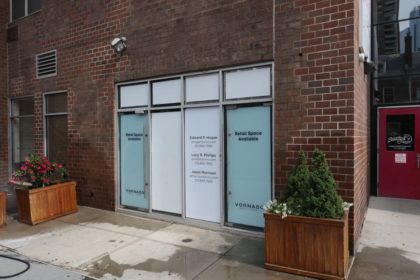
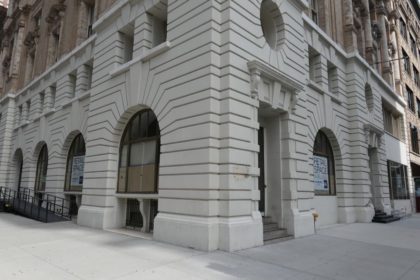
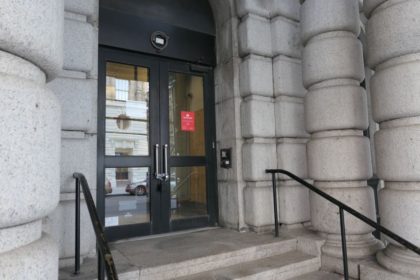
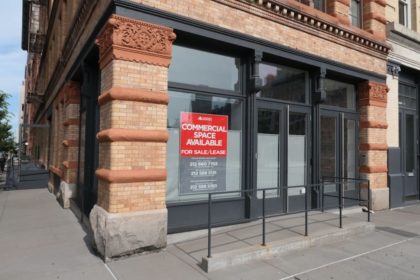
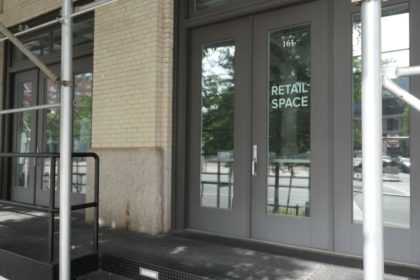
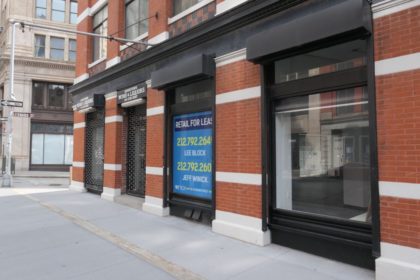
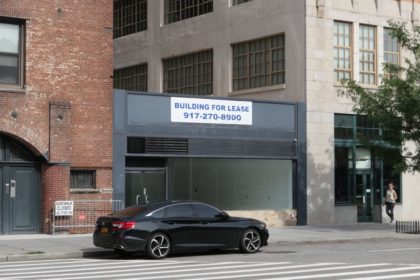
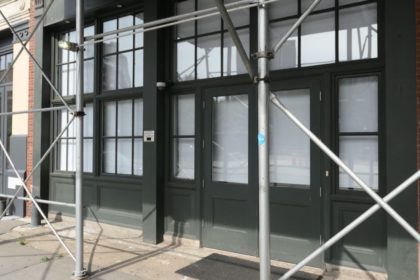
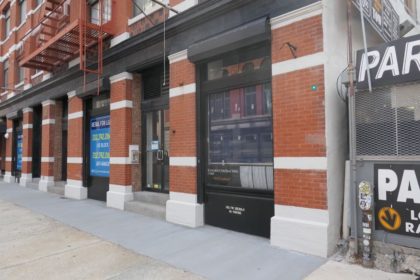
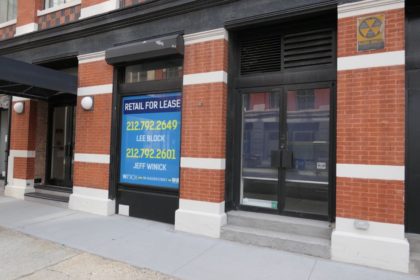
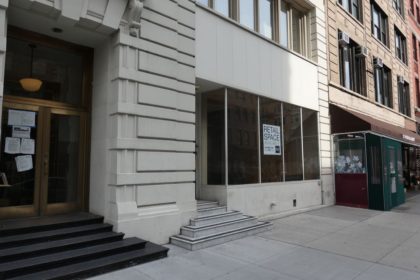
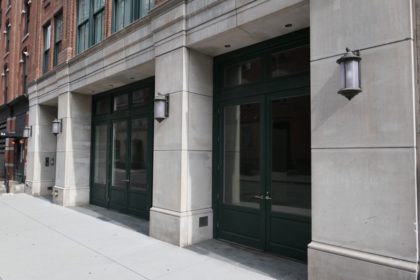
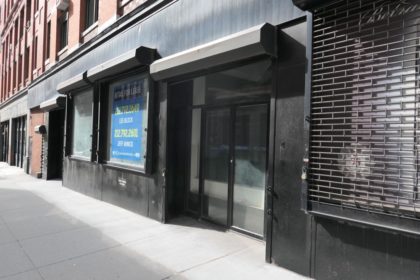
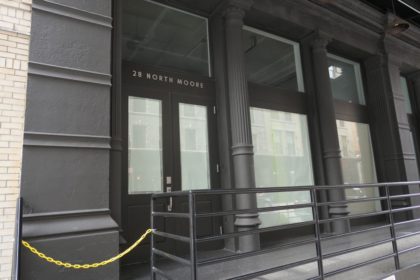
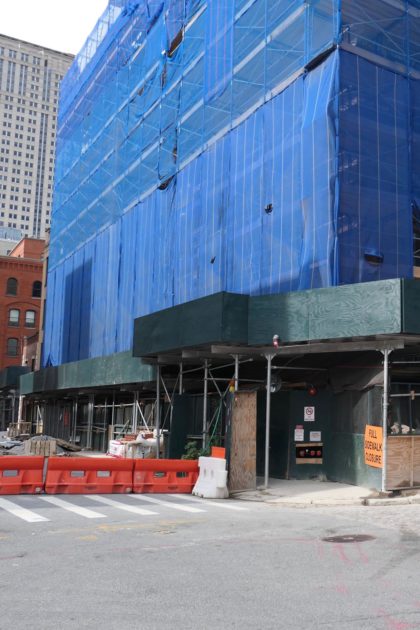
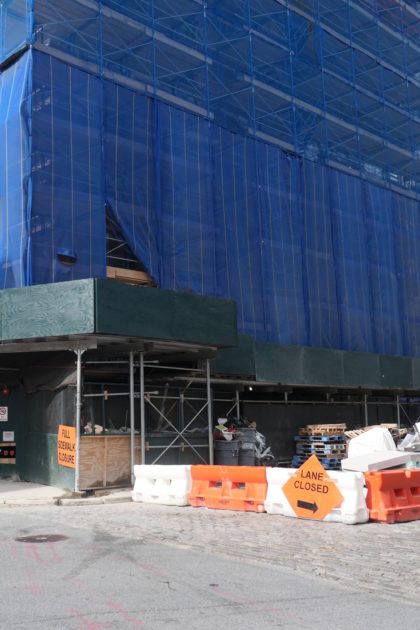
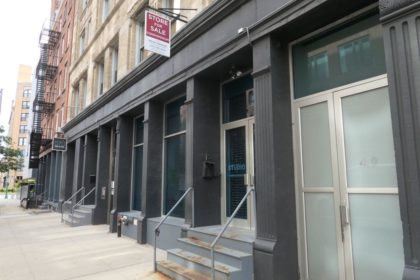
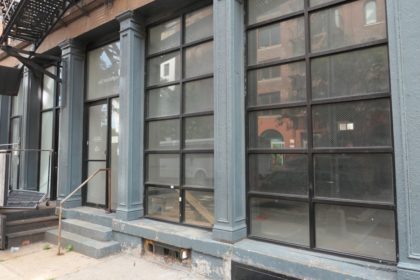
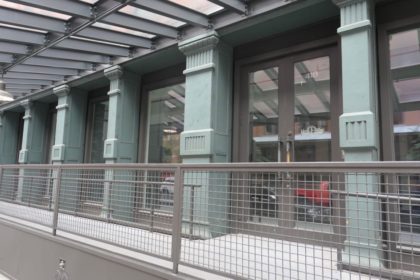
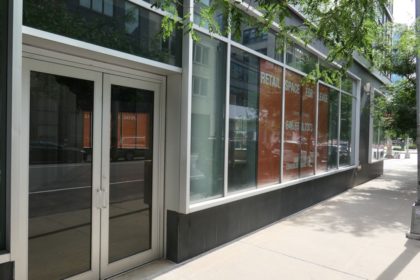








What’s the answer to this problem?? Local shops make a neighborhood- we need them big time!
Actually, we don’t NEED them. That much is clear from Eric’s post as well as from reporting on this subject in other publications. Developers keep building and selling posh mega-apartments. Tribecans still wear expensive clothes and drive expensive cars.
Kids keep going away all summer. Tribeca might never be able to sustain much retail in its environs. What Tribeca and neighborhoods across NYC need is vibrant activity at street level. It’s time to look for new sources.
You really don’t know much about real estate. Anyone can count vacant stores.
Most landlord’s really want to lease their space, at fair rents and are marketing spaces to do so. They do NOT benefit by having vacancy. They are not holding out for more $$. Fact is there is a scarcity of quality retailers looking for space. Many retailers are under experienced, and don’t have the operating capital to survive. Others just plain suck. K-Mart, Children’s Place, Sears, etc.
On the other hand, look at the quantity of boxes delivered to your lobby daily. STOP price checking at the local store then ordering on-line to save $2.00. SHOP LOCAL!
To adopt the same tone as your point, “you really don’t know much about economics.” If the market won’t bear the rents landlords are demanding, for whatever reason (Amazon, lack of population density in Tribeca etc) then how exactly are the rents “fair”? Landlords are holding out hope for a magical return to a leasing environment that is long gone – the faster they realize it, better for them and the community (i.e. commercial tenants and fewer vacant storefronts).
Craig S: Why that nasty tone? Why criticize Erik by saying “anyone can count vacant stores?” That’s all he set out to do. He did the work of counting them and offered some possible explanations. BTW, you don’t know much about grammar. The plural of “landlord” is “landlords”, not “landlord’s”.
I don’t think you know much about real estate taxes. Landlords can write off some rent they ‘didnt’ recieve, thus it serves them well to sit on properties until a large tenant comes in with deep pockets. Why do you think Di Blaiso has mentioned a bill to tax landlords who are sitting on vacant stores more than 24 months??
NYC assesses most commercial rental property based on the income it generates and has done so since the 1980s, by virtue of State . Just as you do not pay personal income tax on salary you were not paid, you should not pay property tax on rent you did not collect. That is different from the magical tax credit some people think is out there.
Who knows why de Blasio proposes anything related to economics and taxation, aside from playing politics while serving his own personal interests? Leave aside for one minute all the meetings with real estate developers and lobbyists he has tried to conceal.
There is, for example, a cap disproportionately lowering taxable values and therefore property taxes on the homes de Blasio personally owns and rents. I do not see him proposing to tie that tax break to rent stabilization of one-to-three family rentals, thus creating affordable housing, for example.
According to a Crain’s article in 2017, “a 2014 investigation showed that Mayor Bill de Blasio’s Park Slope home, then worth more than $1.4 million, was assessed at a value that triggered a $2,894 tax bill for the year, while a similarly valued home in Borough Park paid five times more. The mayor’s bill was low in part because the value of Park Slope homes rose so explosively that assessments—limited by the 6% rule—could not keep up.”
James…thank you for your insights on many of the topics here. I find your posts very helpful in understanding the issues raised.
R u kidding? I live in NW tribeca and the empty storefronts with white cardboard used to be a coffee shop, a pizza place, a Japanese restaurant, a nail salon, a dry cleaners, and the IPN deli. All did great business but were pushed out because the rent was hiked to 60K a month! These places have been vacant for about 4 years now. These real estate moguls must have money to burn since they are determined to keep it vacant till they get their price. We need a vacancy tax now! They are destroying our community with their greed.
Nancy,
Very valid point indeed!! I remember the old shops at IPN and shake my head every time I walk past the empty storefronts.
I think the problem has compounded itself further as many landlords have used the “higher” valuations on their property to borrow more against them and so cannot afford to rent at lower prices.
Erik also has a very valid point – yes Tribeca has definitely become an even wealthier neighborhood over the years but that is certainly not reflected in terms of foot traffic or sales per square foot. We are still very low population density. Anyone who can afford to pay those Retail rents will certainly choose a more highly trafficked / revenue generating area instead.
The rents should adjust to take all of this into consideration.
These things do tend to normalize over time so here’s hoping we see more flexibility and signs of new life in our neighborhood again.
Agree with Nancy G 100% What’s happened at IPN is a perfect example of rampant greed. And I’m not buying that the vacancies are due to online shopping — I can’t get a latte, a pizza, a deli sandwich, or my nails and dry cleaning done from Amazon.
I am new to the TC so I missed all this discussion about it last year. I have to say that the most outrageous expulsion of functioning small businesses I personally have ever witnessed was that group of stores that ran north from the Duane-Reade on Greenwich Street. Nancy G. has expressed my sentiments exactly, but at the time when the landlord first decided these enterprises should disappear from its property, I heard the following rumor, which I would like to know if any of your readers can confirm or deny – which is that the landlord paid those businesses to get out, before their leases were up, that there was a plan for some kind of ”financial center” for these combined spaces. If this was the case, then the buyout (if this scenario is accurate) served only to get a head start on providing us with yet more needlessly empty store fronts for our viewing pleasure.
The empty storefronts are a community problem and not a landlord, Tribeca resident, or a storekeeper problem.
Perhaps it is a time for members of all parts of the community, including the residents, police, landlords, storekeepers and others to meet in order to find solutions to this continued blight.
This is not the first time NYC has been challenged and certainly it will not be the last.
The future is ours to create, not to be bystanders.
I, for one, am in on this.
Erik, thank you for both fine article and your superb publication.
Larry
To Craig S’s point, what about the challenged/changing state of retail? Many retailers are closing locations, and even luxury brands are struggling as consumers increasingly prefer to spend on experiences rather than goods. In addition, many new companies are going direct to consumer instead of opening retail locations. Perhaps, in addition to all the very valid points that others are brining up, we are just in the midst of a larger shift in the overall retail landscape.
One word = Amazon. Better price, better selection, ease of delivery. No one is going to overpay for “community.” Hard truth. Deal, yo.
Yep. It’s Amazon. I needed a certain brand of doggie treats intended to address my dog’s plaque. I went online, choose the best price for exactly what I needed, and was done in about 5 minutes. Sure, I missed out on the exquisite shopping experience of combing the aisles of the local pet shop and inquiring if they carried that brand, etc. But anyway…yeah, it’s Amazon. And I’m not sure what the solution is – we can only have so many pop-up art galleries in the neighborhood. Maybe lower priced commercial space will lead to ground level offices and work-spaces? Schools? It will be interesting to see how this develops. Thank you, Erik, for doing your usual astounding job of nailing precisely what’s going on around here. I don’t want to lose you at The Citizen…but you’d be incredible as a City Council person.
Amazon has many of us programmed to only check their website but there are also great deals on Walmart.com as well. You have to shop local or in time nothing will be left. The BN just started a Buy Online Pick Up In Stock option. Reserve the book at home and when you pick it up at the store you get the online price. We need more stores that drive traffic from the screen to the physical location.
yeah, but isn’t Walmart owned by Idi Amin or Heinrich Himmler or whomever? Amazon is owned by the guy who owns The Washington Post, so I’ll support him over Walmart any day, given my choice of plutocrats.
This is an amazing report. I fully appreciate the time and energy you spent on this, Erik. Thank you!
I miss the old Tribeca, with small restaurants and boutique shops. Live here for OVER 20 years and seen so many great idea stores to closed within 2 years. I support a vacancy tax, landlords are waiting for the next big thing, or developers to come in and build.
I think the issue is that landlords are legally allowed to write off something like 80% of their asking prices. So actually it is the taxpayers who are paying for the vacant properties. The landlords can lower their profits by these “liabilities” and then pay less in taxes. The best thing to do would be to stop allowing these loses to be written off and also to institute a “vacancy tax”.
You can see what de Blasio is proposing here: https://nypost.com/2018/03/30/de-blasio-eyes-vacancy-tax-for-greedy-landlords-seeking-top-dollar/
(as well as probably other more official places)
Also we all need to acknowledge that the retail landscape is changing. People do not buy most things from physical stores. The types of businesses that have staying power are services- delis (maybe), nail salons, gyms, kid care/services, OT/PT, coffee shops, restaurants, bars, etc. The current number of commercial spaces in Manhattan is likely more than will be necessary for the amount of service industries required.
I think the city should rezone some of the excess commercial spaces to residential which would also then help with the housing shortage.
Having empty storefronts is not only an eye sore but also not safe. As Jane Jacobs pointed out, areas with mixed used are the ones with the lowest crime rates. Safety in numbers. I fully believe she was right.
I wanted to add a few other things that I have found that make it challenging to keep the lights on as a small service business in the city.
1.) Deposits: in 2010 deposits were 1-2 months, now 4-6 is typical.
2.) Personal Guaranty (often called good guy clause): When I signed my first lease 8 years ago, the GGC was 1 months at $2k/month. My most recent lease is 6 months at $10k/month. GGC are basically personal guaranties. Unless you have quite a bit of personal money, that is a huge chunk of change for most small business owners to guaranty. Open a few locations and that cost gets to be kind of scary. Of course one can say you should know within 6 months if you are going to close the business but it definitely increases the overall risk of trying to start something.
3.) Increase in Rent: Rent spikes are real. – My first location is BK was $2k/month. After that five year lease expired, they increased my rent to $8k/month. We moved to another location but that is an insane spike in 5 years.
4.) Paid time off (NYC sick leave): I don’t disagree with this but it has greatly increased cost.
5.) Increase in minimum wage: (from ~$8-13 in 8 years). I also don’t disagree with this but it has been a significant cost increase.
1- Deposits are more because the Landlord’s risk has also gone up. The costs of repairing damage or illegal tenant work has increased, and the Court delays have made it take months longer to evict nonpaying tenants.
2- GGC is the tenant’s right to terminate their lease early in exchange for guaranteeing the rent while they are in possession, but not for the entire term of the lease. The landlord cannot terminate the lease early if the market goes up, but the tenant can if it goes down.
3- Tenants often benefit from submarket rents during the term of their leases, being able to sell at lower prices while market rents keep competitors from opening stores nearby. When the lease expires, the business model is no longer tenable for many long term tenants when they cannot afford to hold their own prices where they were during the old lease.
4- and 5- Don’t forget other burdens the City adds, like delays and over zealous enforcement by DoB and DoH, property taxes that have risen in part to subsidize breaks to new development condo owners and low rates to co-op owners.
“I think the issue is that landlords are legally allowed to write off something like 80% of their asking prices. So actually it is the taxpayers who are paying for the vacant properties.”
Just as a note; this does not exist.
Erik,Thank you for this informative article. In my humble opinion, you hit the nail on the head: our neighborhood is not dense enough to support small businesses that depend on foot traffic. My bakery has not been able to survive on neighborhood traffic alone, even in the “old days”. My catering and wholesale clients pay my rent.
An idea that might be able to help is this: why not give landlords an incentive to rent spaces under market? this incentive could be in the form of a property tax abatement as long as the leasee qualifies as bringing /keeping value to the fabric of the neighborhood( in other words- no chain stores)
otherwise, Tribeca will become a “destination” neighborhood for restaurants that charge $32 for a bowl of pasta or “flagship” fashion stores for those brand that can write off the rent as a marketing expense.(IOW, Soho)
Thank you, Erik. And thank you, Madeline Lanciani. My wife and I have been patrons of Duane Park Patisserie for two decades, and always fear you will close. I think your of a rational neighborhood association to discuss the desertification of Tribeca retail life and what to do about it is a good one. We’ve had neighborhood organizations before, and they have been successful.
151 shops for rent . . . and not one of them a fit for Illya, the barber on Lispenard St. who is desperately looking for a new space in the neighborhood because at some point soon his corner will be be ‘developed.’ Very sad.
As Jonathan commented on June 22, 2018 • 2:45 pm:
“Very tough situation. He wants roughly 100 SF, has a very thin budget, and needs to be on the ground floor for visibility purposes. You might see a lot of vacant retail units throughout the neighborhood, but none of the landlords are going to chop up that space and allocate 100 SF for a single user.”
Just look at the photos of the stores for rent and one can see how large the spaces are, assuming a typical depth of 50-75 feet.
I do understand that. And I repeat, very sad.
I would rather look at an empty store than at another window display of hideous clothing, shoes, and handbags.
Many REITS only want the address for the portfolio prestige. They do not care if its rentwd. A vacancy tax or something that encourages filling the space is needed. Sadly owners or REITs only care about the price per sq ft of the condos to make profit on the investment… Retail occupancy is immaterial.
Funny how no one seems to mention the
position of the community boards.
Drove all small business to Brooklyn.
That landscape is thriving…….
Erik – thanks for the interesting article. As a business owner and someone who leases space, i do feel that the rents on retail spaces and office spaces are disconnected from reasonable levels – that is manifest in the evergrowing number of empty spaces. Strangely landlords are very slow in adjusting rents. Look at the former Delluva spa location which has been empty for at least 4 years. At some point, the massive amount of supply should cause prices to come down – i hope we are close. It would be better for retail businesses and the tribeca neigborhood.
Maybe put some pressure on the community board to ease up on Biz Regulations. It’s almost impossible to open a restaurant or bar in the neighborhood with reasonable terms, unless you’re one of the hotel owners.
My husband and I were the owners of Antiqueria Tribeca for 18 years. We loved the neighborhood and it’s vibe and shortly thereafter we moved here as well.
It didn’t take too long to realize that the neighborhood did not support us. I could count on one hand the local residents who actually became clients. Our business could exist and actually thrive thanks to clientele from all other parts of New York,who appreciated our service, quality and last but not least fair prices.
The community board was not much help either. After we displayed an appropriate and tastefully done flag to make people aware of our existence we were slapped with a $5000 fine that would continue daily if not removed immediately. In their words”We do not want another Soho”. Well, are you satisfied now? Is Ghostown classier or safer than Soho? When our streets are dark, deserted and neglected it also becomes a safety issue for all residents, rich or poor.
In closing I need to add that we very much miss our store, it became our home away from home. We had the good fortune to meet a lot of wonderful people who became part of our lives as we did part of theirs.
Whether the issue is applications for Landmarks or Sidewalk Cafes or Liquor Licenses, it is really the city agency having jurisdiction that matters. The Community Board’s review is usually advisory at best, and ignored by the agency having jurisdiction at worst.
Landmarks has been a stickler about flags for years now. LPC is a double edged sword in preserving the neighborhood. No exterior changes can be made without an application to LPC and their approval.
LPC violations on a building issued for non-compliance can halt issuance of all Dept. of Buildings construction permits, certainly angering one’s neighbors in the same building.
https://nypost.com/2004/04/15/keeping-up-appearances-historic-and-landmark-buildings-have-special-needs/
“[…] When something is a designated landmark,any exterior change is reviewed by the Landmarks Preservation Commission, including permits for work. […]
“Flagpoles have proliferated in historic areas like SoHo, for instance, because signage is tightly controlled. That means retailers unfurl flags to catch the attention of shoppers, and sometimes don‘t know the rules.
“‘One flagpole leads to another and another flagpole and then whole streets of flagpoles, which frankly obscure the historic architecture,’ [Simeon] Bankoff [,the executive director of Historic Districts Council,] complained.
“But area residents and other shopkeepers are quick to spot illegal hoists and drop a dime on the offender. ‘Just like they want you to maintain the integrity, they also want your neighbors to comply,’ [Peg] Breen, [President of the Landmarks Conservancy] explained.
“‘It protects property values and the aesthetics of the street.'”
Wow, just want to say I am impressed. This was no easy task.
Interesting video about empty storefronts in NYC:
https://www.westsiderag.com/2019/07/28/video-hex-game-cafe-owner-diagnoses-uws-retail-malaise-calls-some-arguments-crazytalk
I love this debate from all sides.
One of the grand reasons NYC, and Greenwich Village became the amazing place it was in the 50s is because for the most part, it was abandoned. This repeated in the LES in the early 80s. And Williamsburg and so on and so forth. Culture, it seems, grows in the weeds. And this city _was_ CRAZY with culture.
Guilliani sterilized it, and turned the place into a strip mall. The landlords pillaged and gauged the hell out of. And Bloomberg and his Real Estate Czar filled in every inch with more mall stores.
None of these people understood an ounce of what dragged most people here in the first place. What they didn’t realize is that malls are dead. So they keep shoving more mall stores in the city, and the culture suffocates.
But now, things have changed. People work remotely. People want to get out of the hell that is the subway and would rather eat rocks than come in on the weekend. The connected world doesn’t need or use real estate the same way. Work days have gotten way longer, and people just want to get the hell out of the city, hide under their bed, and order in..
Soon 5G will arrive, and again it will change everything. If you can work on a mountain in Colorado, with full high resolution Skype calls, why would you show up at an office, let alone go into the city. It’s over. Done. Gone.
On top of this, most apartment that are going up now are money laundering schemes for the Chinese and Russians and Saudis to get their money out of their country. Tens of thousands of these apartments are empty, and will stay empty. And they are way over priced, but getting any money out even at a loss, isn’t an issue for them. This is why all the shops and restaurants that go up fail so quickly. These merchants don’t understand how things have changed. If you think Hudson Yards has anything to do with you, you are wrong. It’s a pricey Bodega for these people to pick up stuff when they visit once a year.
The whole world has changed. New York is just too stubborn, refuses to see it, and well like our subway, is just living in the proverbial stone ages.